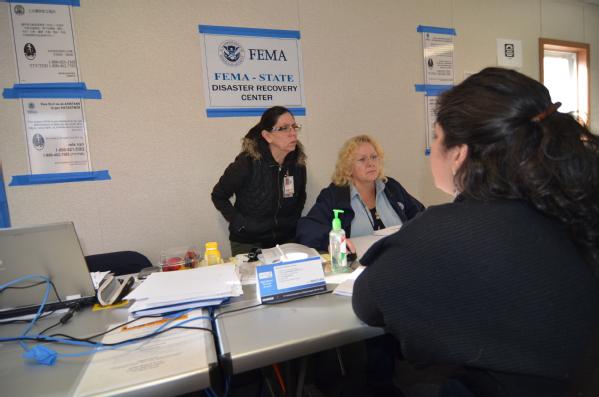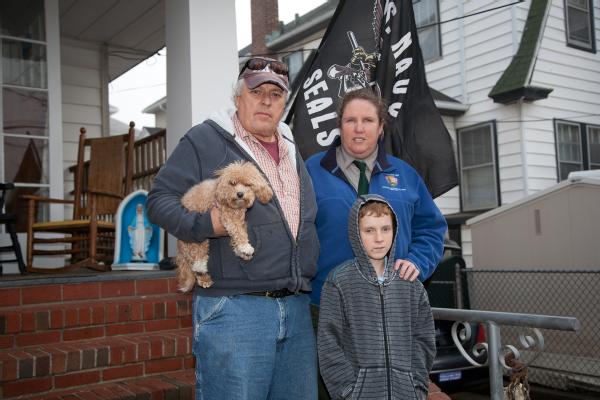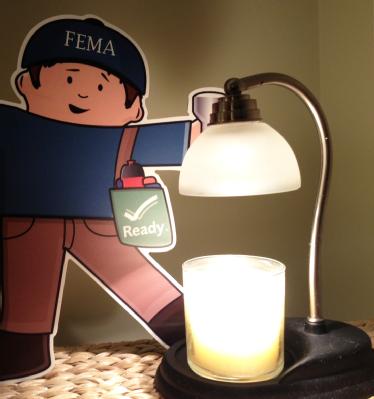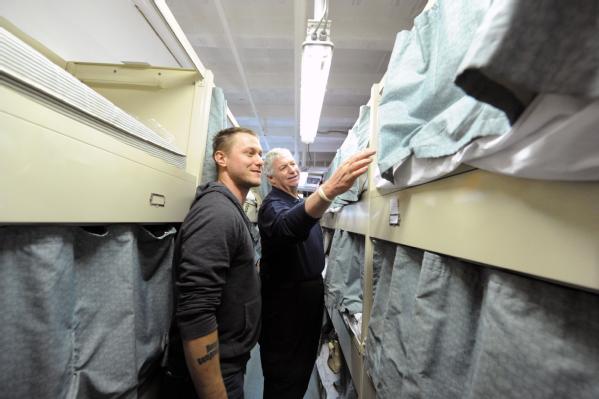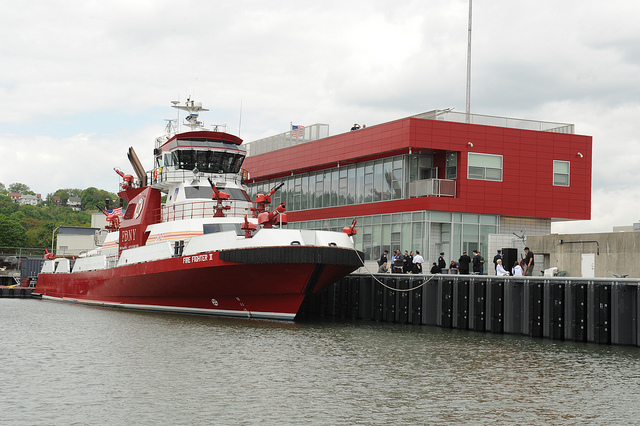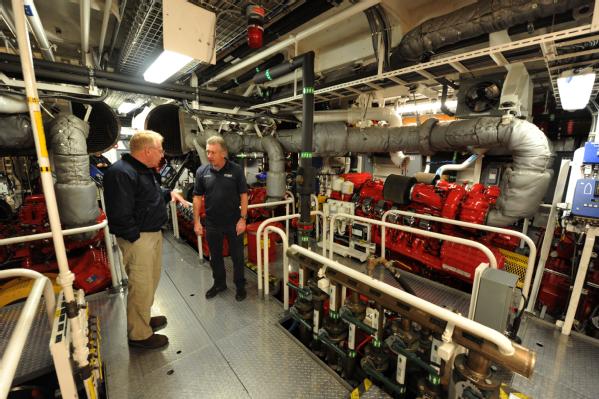A Commitment to Stay with New York, Its Hospitals and the Long Term Recovery
Ceiling panels missing. Wires dangling. Layers of dust. Floor tiles removed and concrete exposed. Five feet sections of walls cut from the ground up, and in some cases, completely removed. Flood lights and construction lights strung along corridors. The constant hum of fans. Hard work. And determination.
These were all things that Mike Byrne and I witnessed on Friday after spending a few hours visiting with employees at Bellevue Hospital and Coney Island Hospital. A few weeks ago I also visited NYU Hospital, and the reason for the visits – because I believe it’s important to get a firsthand look at the damage and hear directly from hospital staff about what they experienced, as well as what their thoughts and ideas are for moving forward.
It was important that Mike Byrne was with me on these visits. Not only is he a New Yorker, but he is also my point person in New York and is the one responsible for coordinating FEMA’s response and recovery efforts. Our recovery effort is very personal to him. Aside from his personal connection to New York, you should know he has worked on many recovery projects and is the right person for this job.
Before we walked around with staff at Bellevue Hospital and see the damage and recovery work, we had to put on yellow protective boots and wear face masks because the area was still being decontaminated and cleaned. I saw the lower areas of the hospital where their equipment and mechanical systems are housed, which were completely inundated with saltwater and destroyed. The orange paint on the wall indicated how high the water rose, a striking reminder even though the water is no longer visible.
At the Coney Island Hospital we saw the same items damaged – water pumps, electrical systems, computer networks – all of the things we need for our facilities to stay up and running. When we walked around with staff, I was in a pump room that was completely filled with water, floor to ceiling. The hospital shared that they are only handling urgent care walk-ins as they continue to get their hospital back to full working operations.
I made it a point to also thank the staff on the frontlines, and to thank them for all of the hard work they have done to get the doors to the hospital open again, because even if it’s incremental, it’s good for a community to see some services come back online.
It’s telling of the staff that serve their communities, because it’s their hard work and determination that has gotten them this far. What’s even more telling is that the staff are also storm survivors themselves, and they have their own personal recovery work to do, all the while they get the hospital back up and running.
I wanted to share some photos from both hospitals:
Bellevue

CAPTION: New York, N.Y., Dec. 14, 2012 -- Bellevue Hospital Associate Executive Director of Facilities Management, Michael Rawlings, center, explains the damage incurred by Hurricane Sandy to Administrator Craig Fugate, left, and FEMA Federal Coordinating Officer Michael Byrne, right. Due to the continuing efforts of abatement, visitors are required to wear protective gear when going into areas where cleanup continues.

CAPTION: New York, N.Y., Dec. 14, 2012 -- Administrator Craig Fugate, left, and FEMA Federal Coordinating Officer Michael Byrne, right, get a tour of Bellevue Hospital in Manhatten, by Associate Executive Director of Facilities Management, Michael Rawlings, center. The orange line on the wall indicates how high the flood waters were after Hurricane Sandy. Due to due to the continuing efforts of abatement, visitors are required to wear a face mask and rubber boots.
Coney Island

CAPTION: New York, N.Y., Dec. 14, 2012 -- FEMA Administrator Craig Fugate, second from right, gets a tour of flood damaged areas of Coney Island Hospital by Director of Faciliites, Daniel Collins, right and Senior Vice President of Coney Island Hospital Arthur Wagner, second from right. FEMA officials and senior hospital staff joined the Administrator on the tour.

CAPTION: New York, N.Y., Dec. 14, 2012 -- FEMA Administrator Craig Fugate, center, listens to Senior Vice President of Coney Island Hospital Arthur Wagner second from left, along with FEMA Federal Coordinating Officer Michael Byrne, second from right, during a tour of flood damage caused by Hurricane Sandy. Flood waters damaged many of the operational components of the hospital.

CAPTION: New York, N.Y., Dec. 14, 2012 -- Administrator Craig Fugate, right, along with FEMA Federal Coordinating Officer Michael Byrne, left, get a tour of damage caused by Hurricane Sandy at the Coney Island Hospital. They were joined by hospital administration and were shown areas of the hospital impacted by Hurricane Sandy. This particular room has imaging equipment that was destroyed by the storm surge waters.
During my conversation with staff from both hospitals, I also discussed three items that I see as the way forward from Hurricane Sandy, which can be described as the now, the temporary and intermediate work, and the long term work and planning.
The first item, or the now, is helping the hospitals with the bills they have now, because of the extraordinary cost they have incurred from when the storm hit, up until this point. We call these protective measures, and as part of the President’s major disaster declaration for counties in New York, we can reimburse them for their emergency work.
Building off of the first item, the second item is looking at how much temporary work can be done to get back to capacity, to get hospital units back up and running. These are the intermediate steps, but it’s prioritizing and looking at the critical aspects of the hospital and the functions they need to serve their community – whether it’s a unit for trauma, psych or radiology. These are not necessarily full term permanent solutions, but just like getting a clinic open, what’s next, and is there a function this hospital serves that other, surrounding hospitals don’t, meaning there is an even greater need.
And building off of the function theme, as the staff continue to think through long-term solutions, I encouraged them to look past just rebuilding and making changes based on the effects of Hurricane Sandy. What I mean by that is, if we mitigate just against what occurred during Sandy, we’re not really mitigating against the worst case, because the next storm could be much worse. I heard this from others, that after Hurricane Irene, they changed or improved their protection plans based on Hurricane Irene’s impact, but it didn’t help with Sandy because the storm surge was so more devastating then Irene.
This is what I mean, that all of us in the emergency management field need to do – we need to shift the way we’re thinking about making our communities stronger and better. We can’t make them stronger and better just based off of the last storm, because next year or in 10 years, even if there’s one more foot of water then what we had with Sandy, then we’re back to the same problem – and what did we accomplish?
Mike Byrne has the right people on his team who know hospitals, and we’re going to get this done. I don’t want missed opportunities and I want to get it right the first time, so I’ve told the team the mantra is speed, not haste. The goal is to do it once, and then it’s done, and it’s done right.
The recovery work individuals, families, businesses, and hospitals have in front of them won’t happen overnight, the recovery will take time, but we’re not going anywhere. Our commitment at FEMA is to stay with New York – and all of the impacted states for that matter – until the job is done. FEMA staff (community relations specialists and registration assistance specialists) continue to work in the impacted neighborhoods to talk with survivors, and I know Mike is continuing to attend town hall meetings, so he can personally talk with survivors, because just like we talked firsthand with hospital staff, he likes to talk firsthand with survivors to have a conversation with them and answer their questions directly.
Secretary Donovan, from the Department of Housing and Urban Development, is tasked with working directly with communities as they come together, to map out what their new community looks like, and they aren’t going anywhere either. Mike and the rest of the FEMA team in New York, in support of the State and affected communities, will continue to work closely with Secretary Donovan’s team.
Again, and I can’t say this enough – FEMA will stay with New York until the job is done.




